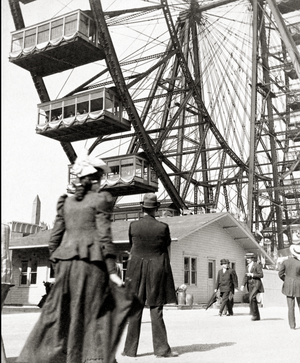Your Cart is Empty
Free and Fast Shipping | 30 Day Money Back Guarantee


The World's Columbian Exposition, commonly known as the Chicago World's Fair, was held in 1893. The fair was organized to commemorate the 400th anniversary of Christopher Columbus's arrival in the New World in 1492. It took place in Chicago, Illinois, and was a seminal event in the history of the United States, showcasing American innovation and culture.
The fair covered more than 600 acres and featured many attractions, including the first Ferris wheel, designed by George Washington Gale Ferris Jr. The fairgrounds were designed by a team of architects and planners including Daniel Burnham and Frederick Law Olmsted. The layout of the fair was called the "White City" because of its grand, neoclassical buildings made of a material that looked like white marble (though it was actually a type of plaster).
Various countries and states participated, setting up their own pavilions to showcase their cultures, technologies, and goods. Technological marvels like electricity, moving walkways, and even early versions of products like Cracker Jack and Quaker Oats were introduced at the fair.
The event also had a significant impact on American culture and inspired future city planning, architecture, and design. Unfortunately, the fair was also marred by instances of racial exclusion and discrimination. For example, African Americans were largely excluded from the official proceedings, leading to protests and the publication of pamphlets like Ida B. Wells's "The Reason Why the Colored American Is Not in the World’s Columbian Exposition."
Overall, the fair attracted over 27 million visitors during its six-month run, making it an enormous success for its time and leaving a lasting legacy on American history and culture.